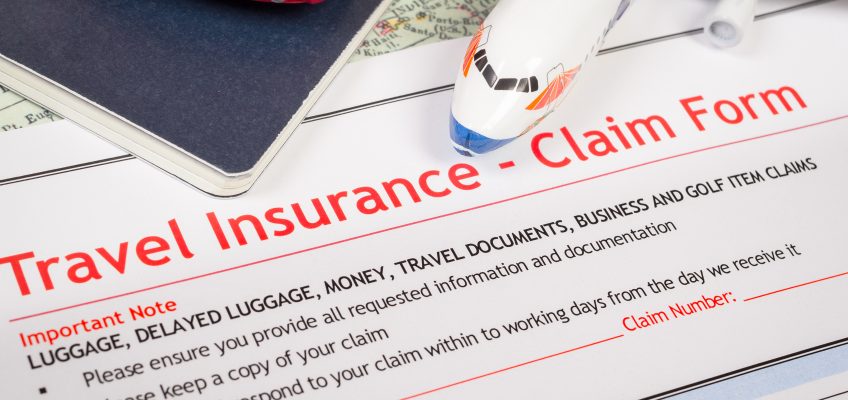Travel insurance claims can be painful … but they don’t need to be.
Knowing a few insurance principles can make the process of travel insurance claims a little easier.
The Go Insurance claims team processed thousands of travel insurance claims during 2015 and we are pleased to advise that no claims were referred to the Financial Ombudsman Service.
Travel insurance is often a grudge buy and the policyholder has little ability to gauge the quality of the product until they need to make a claim. We take travel insurance claims seriously and we thought we’d share some tips and tricks to help you navigate your way to a successful claim resolution
1. Know what is and what is not covered
Travel insurance is a contract. It sets down the rights and responsibilities of the insurance company and policyholder in relation to the trip which has been insured. In lay language, it says “if this happens to you during your trip, you must do this and we will do that”. Knowing what is covered and what is excluded together with understanding what you must do if you suffer a loss is crucial to ensuring a successful claim process. We all know that not all travel insurance claims can be paid. Understanding what types of losses are excluded from cover reduces the prospect of being disappointed should something unfortunate happen.
2. Proof
Whilst we can’t speak for other travel insurers, it’s not that we doubt the validity of travel insurance claims – it’s just that we have auditors that review claim files. Our claims team need to obtain documentation and information from the claimant to prove that the loss is recoverable under the terms of the policy.
Under insurance law, the claimant bears the onus to prove that they have a valid claim. Once they have done this, the onus then shifts to the insurance company to prove that an exclusion applies (if they believe it does). What proof will be required in the event of a claim depends on the nature of the claim. It can include letters from airlines to confirm disruption, Property Irregularity Reports for lost luggage claims, medical reports for medical claims and purchase receipts for property claims. If in doubt, your insurer should be able to guide you as to the type of documentation they need to process travel insurance claims. Go Insurance provides this information in our policy booklets and also provide a claim documentation checklist / guide on our website.
3. Acting as a “Prudent Uninsured”
It sounds fancy but it just means that policyholders should act as if they don’t have travel insurance. An example is exercising due care to protect your property from theft as you would do if you had no insurance. If a traveller experiences disruption to their itinerary and makes their own decision on how to resume their trip, purchasing the most economical flights and accommodation rather than travelling First Class or staying in 5 Star hotels (unless that was the basis of their pre-booked travel) is another example of acting as a Prudent Uninsured – that is, minimising the loss and expense incurred due to the disruption.
Proceeding as a Prudent Uninsured to minimise the prospect of loss and / or proceeding on the most economical basis if something unforeseen does happen will mean your position is not prejudiced when you proceed to submit a claim for reimbursement or compensation.
4. Code of Practice
The Australian insurance industry subscribes to a Code of Practice which is designed to raise service standards across the industry for the benefit of customers. It establishes standards of practice for the relationship of insurers, their underwriting agents, authorised representatives and employees and in respect of policy and claims documentation.
The Code provides timeframes for claims handling. Insurers must process valid claims within 10 business days once they have all of the information they need. If they don’t have sufficient information, they must advise the claimant within 10 business days what additional information is required. If further information is required, the insurer must update the claimant every 20 business days as to the status of their claim. If your travel insurance provider is not processing your claims within these timeframes, it might be time to find a new provider.
5. Talk to your Travel Insurer
This is so very important. Communication failure and breakdowns are often the root cause of an unsuccessful claim; disappointment with the outcome; and/or referral to dispute resolution.
If you know you will be doing hazardous activities during the trip, get confirmation from the insurer that they will be covered. If not, it may be possible for the insurer to extend cover. Do you have pre-existing medical conditions or you’re not sure if your condition is automatically covered? Ask the travel insurance provider. If you experience a loss whilst travelling, call your insurer to find out if there is any way the policy can respond. Find out what the insurer needs to process the claim as it is often easier for you to obtain documentation and information at the time and location of the loss event.
If you have a question about the cover provided under a travel insurance policy, ask the provider – there is no such thing as a silly question!
We all benefit from easy and quick claims handling. It is bad enough when something goes wrong but knowing what cover is in place and how to approach the claim process in a way that will assist the claims team determine policy response is a win-win situation.
If you have any questions about travel insurance claims, please don’t hesitate to contact us on 1300 819 888 or email claims@goinsurance.com.au



